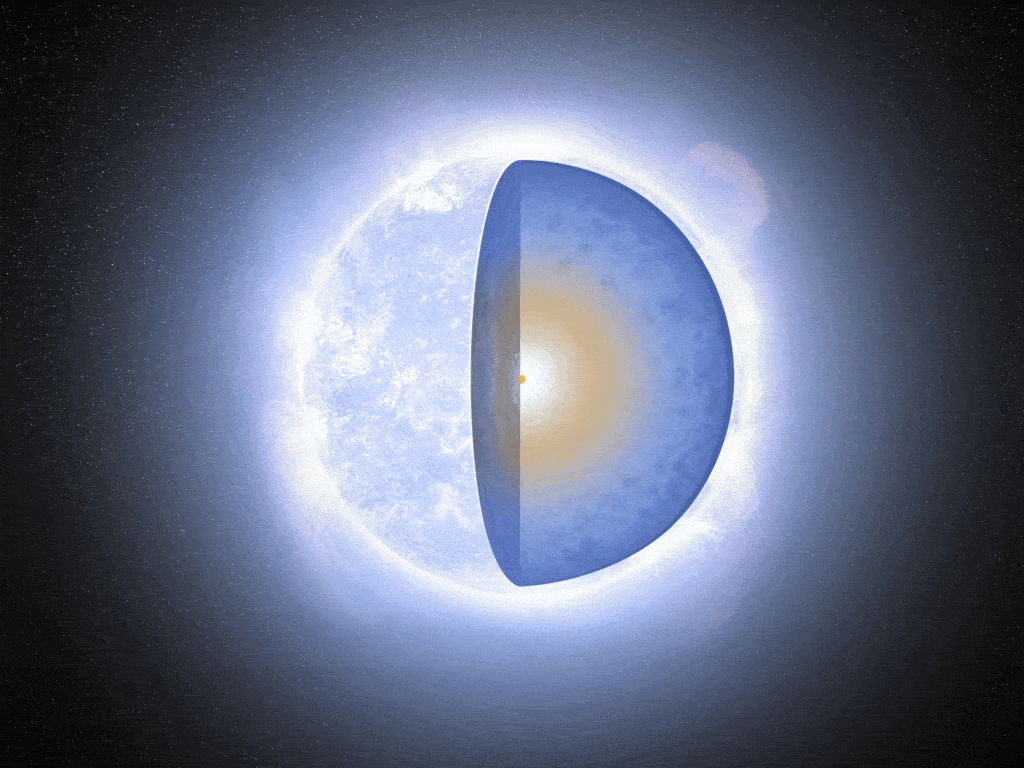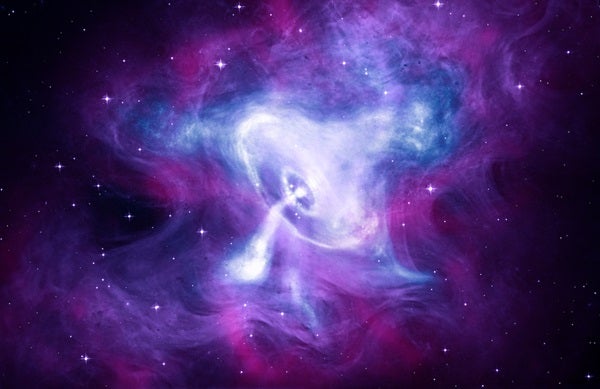Astronomers think they may have found the most powerful pulsar to date in a distant galaxy.
The fast-spinning neutron star — the dense remains of a once massive star — is just beginning to emerge from the supernova remnant that birthed it. The object, called VT 1137-0337, was first seen in 2018 by the VLA Sky Survey, a project imaging about 80 percent of the night sky over seven years. The pulsar did not appear in an earlier image taken by the Very Large Array (VLA) in 1998, suggesting that the object is also one of the youngest neutron stars yet found. Estimates put it at no older than 60 to 80 years, but possibly as young as 14 years.
The finding was announced today at the 240th meeting of the American Astronomical Society (AAS) in Pasadena, California by lead author Dillian Dong, a graduate student at Caltech.
Metamorphosis
Some 395 million light-years distant, this neutron star lies within a dwarf galaxy called SDSS J113706.18-033737.1, which is experiencing a burst of star formation. Containing the mass of some 100 million Suns, the galaxy made VT 1137-0337 stand out compared to the other 20 such luminous transient objects found in the data.
When the massive star that birthed the object reached the end of its life, it exploded in a supernova, concealing the baby neutron star behind a shell of debris. But, like a butterfly breaking free of its cocoon, VT 1137-0337’s powerful magnetic field swept through the surrounding particles, accelerating them to nearly the speed of light and creating strong radio emissions.
“[This] ultra-dense object has basically the mass of the Sun, crammed into a [space] the size of a city,” Dong explained. “When you cram so much material into such a small space, you amplify the magnetic field…[meaning] you have a huge amount of magnetic energy concentrated in this object.” And, when that energy got released, it inflated a bubble within the gas leftover from the supernova, creating this pulsar wind nebula.
Before now, the “star guts are basically too dense,” said Dong, absorbing all the radio light from the pulsar within. But eventually the supernova becomes transparent, revealing the nebula.
Reigning monarch
To get a sense of how energetic VT 1137-0337 is, the researchers are looking much closer to home to the most famous example of a pulsar wind nebula: The Crab Nebula.
The Crab is the remnant of a supernova that lit up the night sky in 1054 — and is still visible to observers today.
“The object we have found appears to be approximately 10,000 times more energetic than the Crab, with a stronger magnetic field,” Dong said in an accompanying press release. “It likely is an emerging ‘super Crab’.”
But the magnetic field surrounding this VT 1137-0337 is so strong that the researchers are wondering if it belongs to another class of neutron star: magnetars.
Magnetars are neutron stars with the strongest magnetic fields in the universe. Their magnetic fields are around a thousand trillion times stronger than Earth’s and somewhere between 100 to 1,000 times stronger than a pulsar’s.
In that case, VT 1137-0337 would still mark the first-time astronomers have seen a magnetar appearing, which, according to Dong, would also be “extremely exciting.”












